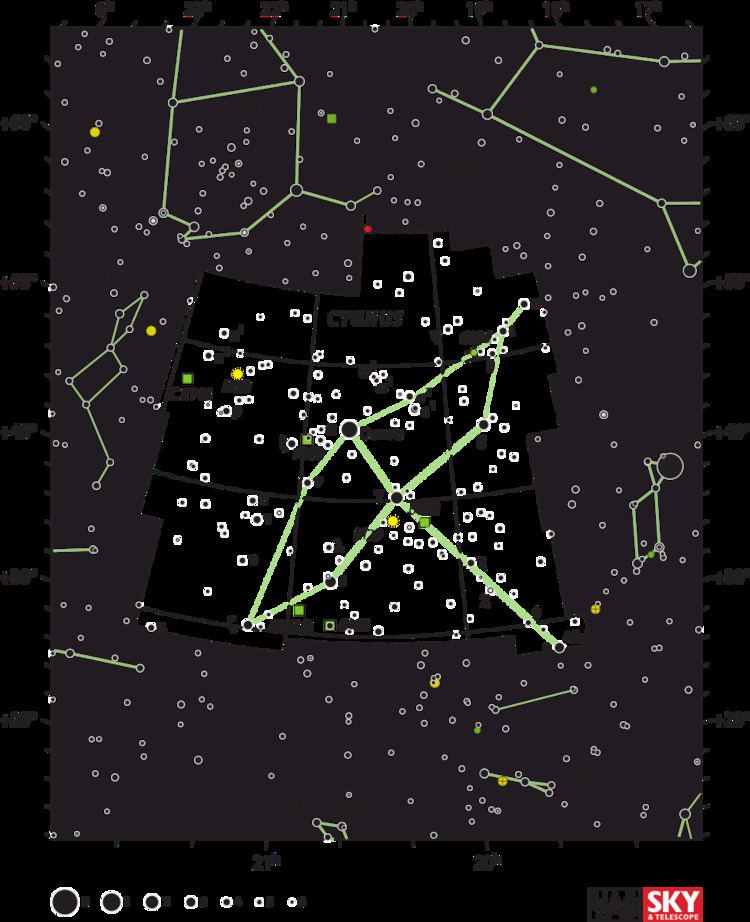Magnitude 4.48 | ||
 | ||
People also search for 17 Cygni, 20 Cygni, 26 Cygni, Psi Cygni | ||
Theta Cygni (θ Cygni, θ Cyg) is a star in the northern constellation of Cygnus. It has an apparent visual magnitude of 4.5, so it can be seen from the northern hemisphere with the naked eye in sufficiently dark skies. Based upon parallax measurements, it is at a distance of about 59.8 light-years (18.3 parsecs) from the Earth. It is suspected of hosting an extrasolar planet.
The spectrum of this star matches a stellar classification of F3 V. The luminosity class 'V' is associated with a category of stars called main sequence, which, like the Sun, are generating energy through the nuclear fusion of hydrogen at their cores. The outer envelope of this star is radiating 4.2 times the luminosity of the Sun at an effective temperature of about 6,381 K, which gives it the yellow-white hue typical of F-type stars. Theta Cygni is larger than the Sun, with about 38% more mass and a 58% greater radius. The estimated age of this star is probably in the range of 0.6–1.9 billion years.
Theta Cygni has a faint companion star at an angular separation of about three arcseconds and a position angle of 56°. This star has an apparent visual magnitude of 13.03, which is too faint to be seen without a telescope. It is a red dwarf star with a stellar classification of M3 V and an estimated mass of about 0.33 times the mass of the Sun. Both components of this system are traveling together through space with a high proper motion of 0.261 arcseconds per year, or 0.4° per century.
Planetary companion?
Radial velocity variations of Theta Cygni have been detected by the ELODIE team while searching of extrasolar planets. Desort et al. (2009) infer these variations are not caused by a dim stellar companion roughly 80 Astronomical Units away from the star, but suggest instead the presence of a perturbing planetary object, twice as massive as Jupiter and orbiting around the primary star in less than half a year. This extrasolar planet has yet to be confirmed.
